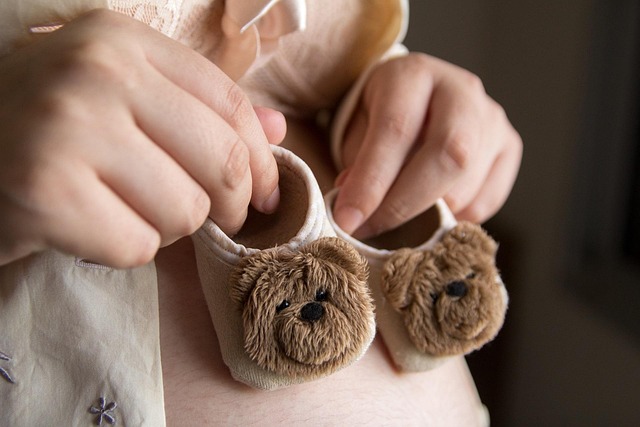Pregnancy can be a challenging journey for many women, and it certainly wasn’t easy on my body. Instead of that radiant glow everyone talks about, I was left with a complexion resembling an oil spill, complete with hormonal breakouts. My nose seemed to expand, my feet morphed from a manageable size 9 to a comically oversized size 10 (seriously, those shoes are more like ski equipment!). I gained a significant amount of weight, leading to concerned discussions with my doctor and raised eyebrows from acquaintances who remembered me before pregnancy.
To add to the list of surprises, I even developed a beard. Yes, you read that right—an actual beard! But, perhaps because I’m a glutton for punishment (or maybe just a hopeless romantic?), I went through this process four times. By the time I reached my fourth pregnancy, I thought I had seen it all: nosebleeds, nausea, stretch marks, and even skin tags. Nothing could shock me anymore—until it did.
One day, I noticed something unusual happening down south. With my fourth baby, it felt as if I was carrying a hefty sack of potatoes on my tailbone, causing constant discomfort in my back and hips. But then I began to experience a strange, aching sensation, a feeling of fullness as if blood were pooling in my intimate area. Initially, I attributed it to the pressure from the sizable fetus I was carrying, but it was more intense than anything I had experienced in prior pregnancies. I kept reassuring myself that there were only a couple of weeks left before I could reclaim my body.
However, the bloated feeling persisted and began to be accompanied by an annoying twinge in my right labia, almost like a mild sting. It even itched at times. That’s when I decided to take a closer look. Rather than struggling with a handheld mirror, I placed a full-sized mirror on the floor and, after some effort, managed to see what was happening. What I discovered was nothing short of horrifying—a bulging vein, resembling a lumpy worm, snaking along one side of my vulva. No wonder I felt so uncomfortable; it was unsettling just to look at it.
After a challenging maneuver to get off the floor, I promptly called my doctor to discuss the situation. The diagnosis? Vulvar varicosity. In layman’s terms, a varicose vein in a location that no one ever wants to have one. This condition typically occurs in the third trimester when the baby exerts more pressure on the veins in the vaginal area, causing them to bulge and produce discomfort. Ugh.
Fortunately, while these veins are indeed uncomfortable and can be visually distressing, they are not an emergency and generally do not interfere with vaginal birth. If you find yourself dealing with one of these unwelcome visitors, rest assured that there are steps you can take for relief. Dr. Emily Carter, an OB-GYN from California, suggests using maternity compression stockings, which you can easily find online or at local drugstores. Additionally, elevating your legs, engaging in light exercise, and avoiding prolonged positions—whether standing or sitting—can provide some comfort.
The silver lining? Most varicose veins will regress naturally in the early postpartum period or within six weeks. Dr. Carter noted that mine resolved within a few days, which was a huge relief—because, let’s face it, postpartum vaginas have already endured enough.
If you’re curious about other aspects of motherhood, such as various family planning methods, check out our post on at-home insemination kits here. For further reading on pregnancy and home insemination, you can find excellent resources at Mayo Clinic. For more in-depth information on varicose veins, visit this authoritative source.
In summary, while varicose veins in unexpected areas can be alarming, they are a common pregnancy occurrence that typically resolve after childbirth. With the right care and management, discomfort can be alleviated, allowing new mothers to focus on what truly matters—caring for their little ones.
